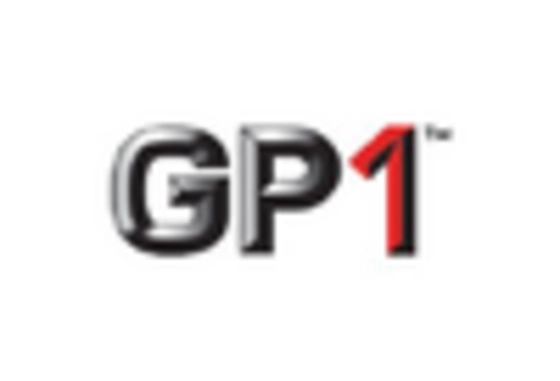Economic Factors
Economic factors play a pivotal role in shaping the Automotive Dealership Market. Fluctuations in interest rates, fuel prices, and overall economic stability directly influence consumer purchasing power and vehicle sales. For instance, a decrease in interest rates can lead to increased vehicle financing options, encouraging consumers to make purchases. Conversely, rising fuel prices may shift consumer preferences towards more fuel-efficient vehicles, impacting dealership inventories. Recent data indicates that during periods of economic growth, vehicle sales tend to rise by approximately 15%, highlighting the correlation between economic conditions and dealership performance. Therefore, understanding these economic dynamics is crucial for dealerships to strategize effectively and optimize their operations in the Automotive Dealership Market.
Regulatory Changes
The Automotive Dealership Market is significantly impacted by regulatory changes aimed at promoting sustainability and consumer protection. Governments worldwide are implementing stricter emissions regulations, which compel dealerships to adapt their vehicle offerings. For instance, many regions are setting ambitious targets for electric vehicle sales, which could account for 30% of total vehicle sales by 2030. This regulatory environment encourages dealerships to invest in electric and hybrid vehicle inventories, thereby aligning with governmental goals. Additionally, consumer protection laws are becoming more stringent, requiring dealerships to provide comprehensive vehicle history reports and transparent pricing. These regulations not only shape dealership operations but also create opportunities for those willing to innovate and comply. Thus, staying abreast of regulatory changes is essential for success in the Automotive Dealership Market.
Competitive Landscape
The competitive landscape of the Automotive Dealership Market is intensifying, driven by both traditional dealerships and emerging online platforms. Established dealerships are facing pressure to enhance their service offerings and customer experiences to retain market share. Meanwhile, online car-buying platforms are gaining traction, appealing to tech-savvy consumers who prefer the convenience of purchasing vehicles from home. This competition compels traditional dealerships to innovate, adopting omnichannel strategies that integrate online and offline experiences. Data suggests that dealerships that successfully implement such strategies can increase their sales by up to 25%. As competition continues to evolve, dealerships must remain agile and responsive to market changes to thrive in the Automotive Dealership Market.
Technological Advancements
The Automotive Dealership Market is experiencing a notable shift due to rapid technological advancements. Innovations such as artificial intelligence, machine learning, and advanced data analytics are transforming how dealerships operate. These technologies enable dealerships to enhance customer experiences through personalized services and efficient inventory management. For instance, the integration of AI-driven chatbots allows for 24/7 customer engagement, which is becoming increasingly essential in a competitive landscape. Furthermore, the use of virtual reality in showrooms is gaining traction, allowing customers to experience vehicles in immersive environments. According to recent data, dealerships that adopt these technologies report a 20% increase in customer satisfaction, indicating that technological integration is not merely a trend but a necessity for success in the Automotive Dealership Market.
Evolving Consumer Preferences
Consumer preferences are shifting dramatically, influencing the Automotive Dealership Market. Today's consumers are more informed and demand transparency in pricing and vehicle history. They are increasingly inclined towards online research before making a purchase, with approximately 80% of buyers conducting online research prior to visiting a dealership. This trend necessitates that dealerships adapt their marketing strategies to engage customers effectively through digital platforms. Additionally, there is a growing preference for electric and hybrid vehicles, driven by environmental concerns and government incentives. Dealerships that align their inventory with these preferences are likely to capture a larger market share. As a result, understanding and responding to evolving consumer preferences is crucial for dealerships aiming to thrive in the competitive Automotive Dealership Market.

















